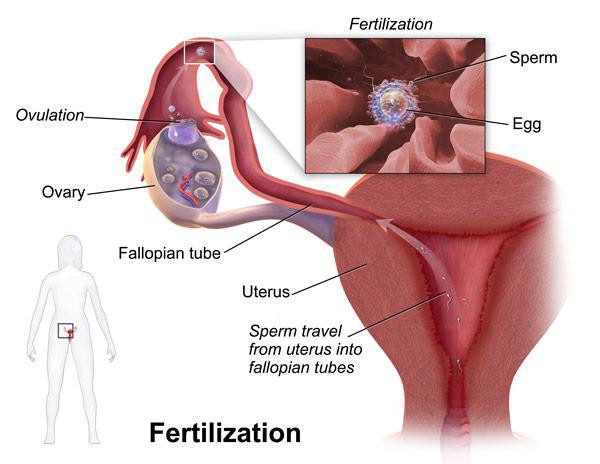The Fertility Evaluation
What goes into a fertility evaluation?
A standard fertility evaluation includes physical exams and medical and sexual histories of both partners. Men undergo a semen analysis that evaluates sperm count and sperm movement and structure. “We look at the percent that are moving and how they are moving — are the sperm sluggish? Are they wandering?” says Robert G. Brzyski, M.D., Ph.D., associate professor of obstetrics and gynecology and the director of the division of reproductive endocrinology and infertility at the University of Texas Health Science Center at San Antonio. “Often, it’s not possible to identify a specific reason for a sperm disorder,” he says. “But there is new recognition that very low sperm or no sperm may be related to genetics — an abnormality of the Y chromosome.”

For women, doctors first check to see whether ovulation is occurring. This can be determined and monitored through blood tests that detect hormones, ultrasound exams of the ovaries, or an ovulation home test kit. “An irregular menstrual pattern would make us suspicious of an ovulation problem, but it’s also possible for a woman with regular periods to have an ovulation disorder,” Brzyski says.
If a woman is ovulating, doctors then move to a standard test called the hysterosalpingogram, a type of X-ray of the fallopian tubes and uterus. This test involves placing a radiographic dye solution into the uterine cavity. Multiple X-rays are taken. If the fallopian tubes are open, the dye will flow through the tubes and be visible in the abdominal cavity. If the fallopian tubes are blocked, the dye will be retained in the uterus or fallopian tubes, depending on the location of the blockage.SImilarly, in 2019, the FDA approved a technique using foam with ultrasound to check the fallopian tubes.
Other tests give doctors more information. For example, ultrasound can be used to examine the female reproductive structures. Hysterosonography is a more complicated type of ultrasound that involves putting salt water (saline) into the uterus during an ultrasound exam. “This is more likely to reveal structural abnormalities than regular vaginal sonography will show alone,” Brzyski says. One such abnormality that hysterosonography may identify is fibroid tumors, which may distort the shape of the uterine cavity. There is also a procedure called a sonoHSG using saline and air bubbles that will evaluate the cavity of the uterus as well as the fallopian tubes.
SUGGESTED
A surgical procedure called laparoscopy also allows doctors to examine the ovaries, uterus, fallopian tubes, and abdominal cavity. This involves inserting a fiber-optic telescope into the abdomen. One advantage of laparoscopy is that it allows doctors to both diagnose and treat conditions such as endometriosis.
Doctors can assess the ovarian reserve by measuring hormone levels and seeing how the ovaries respond to various fertility treatments. This helps evaluate the availability of eggs and the likelihood that a healthy pregnancy will result. “Some women who are 35 are fertile while others are not because their supply of eggs is depleted,” Brzyski says. “In the last decade, we’ve learned this can be investigated through a blood test on the third day of the menstrual cycle. If the numbers are normal, it doesn’t guarantee fertility. But if the numbers are abnormal, it points to a serious problem. Up to 20% of women who seek infertility care have an abnormal ovarian reserve test.”
There are also tests that evaluate how sperm and eggs interact, as well as whether either partner is developing antibodies to the sperm. This occurs when the man’s or the woman’s immune system recognizes the sperm as something foreign and attacks it.
